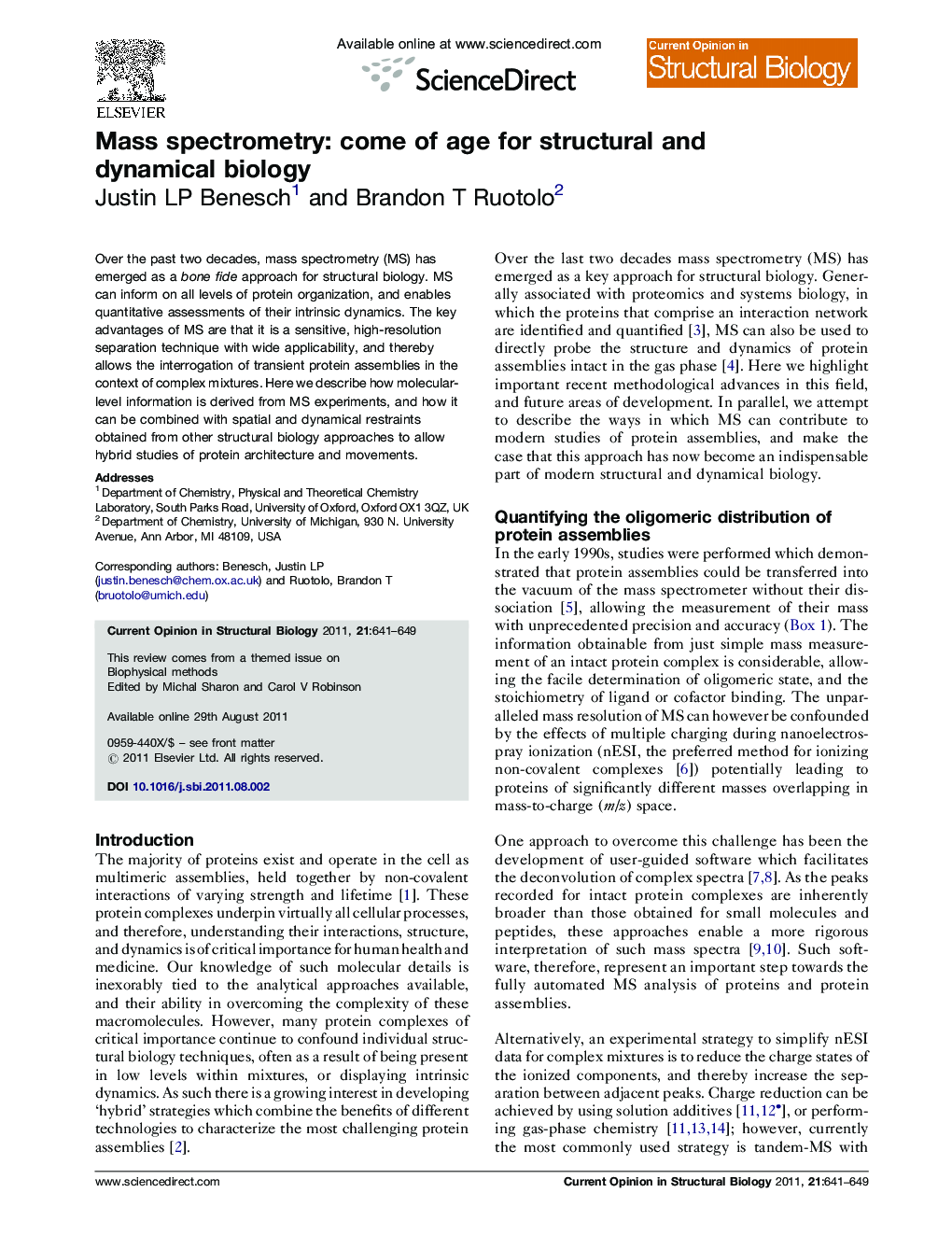| Article ID | Journal | Published Year | Pages | File Type |
|---|---|---|---|---|
| 1979242 | Current Opinion in Structural Biology | 2011 | 9 Pages |
Over the past two decades, mass spectrometry (MS) has emerged as a bone fide approach for structural biology. MS can inform on all levels of protein organization, and enables quantitative assessments of their intrinsic dynamics. The key advantages of MS are that it is a sensitive, high-resolution separation technique with wide applicability, and thereby allows the interrogation of transient protein assemblies in the context of complex mixtures. Here we describe how molecular-level information is derived from MS experiments, and how it can be combined with spatial and dynamical restraints obtained from other structural biology approaches to allow hybrid studies of protein architecture and movements.
► Mass spectrometry is a sensitive, high-resolution means for determining the oligomeric distribution of proteins. ► The different oligomers and conformers comprising a heterogeneous ensemble of proteins can be individually interrogated. ► Intra- and inter-subunit connectivity, solvent accessibility, and oligomeric size can be elucidated. ► Pre-equilibrium and equilibrium dynamics spanning residue to oligomer levels can be measured on the μs to hour timescales. ► Mass spectrometry is an approach of wide applicability which can be integrated into hybrid structural biology approaches.
